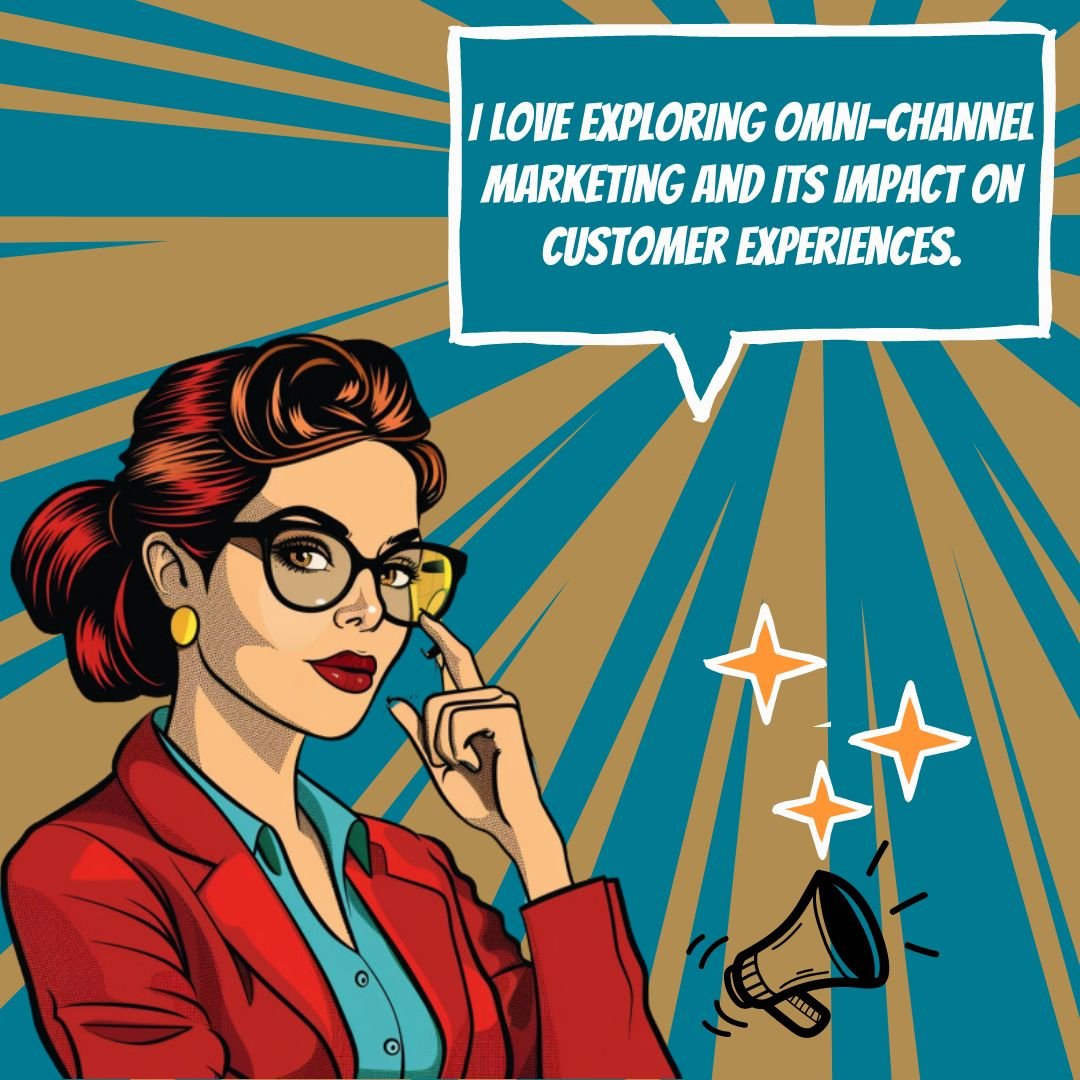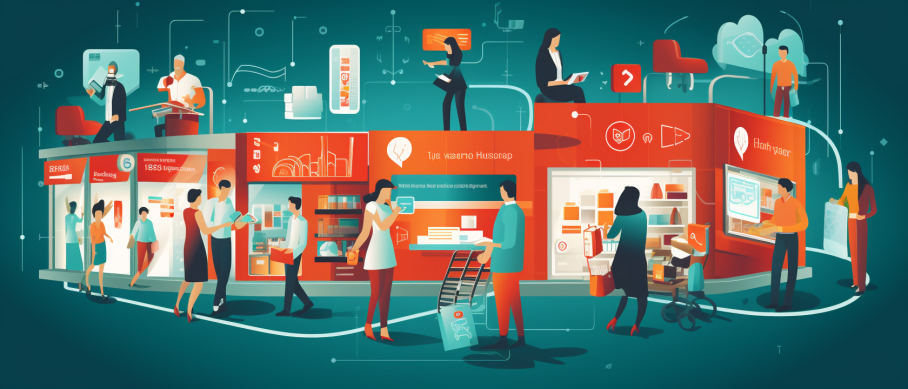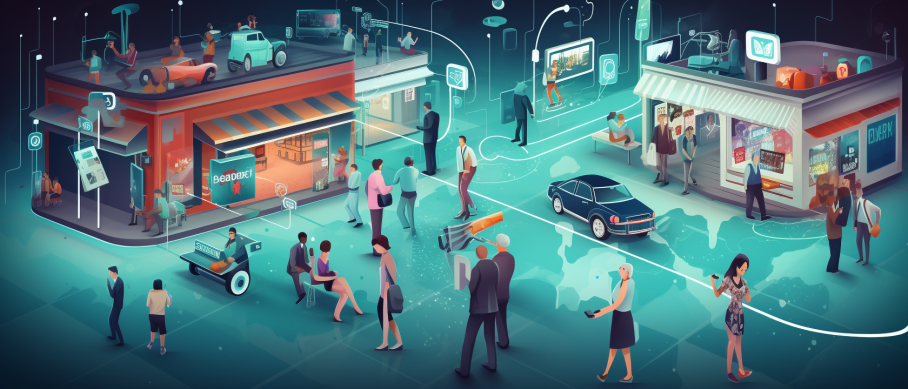Key Takeaways
✅ Seamless customer experiences are the heart of omni-channel marketing, where consistent and personalized messaging across every platform is key. Imagine a brand knowing your preferences, whether you’re clicking through a website or strolling through aisles. By 2024, a whopping 89% of companies hope to compete primarily on customer experience – that's where seamless journeys shine.
✅ Data integration and analysis will be critical by 2024. You've got piles of data, but how do you make sense of it all? Advanced tools provide the shovel to dig deep into customers' worlds, uncovering gems about their preferences. This knowledge fuels strategies that hit the mark, potentially increasing customer retention by up to 5% and profits by 25-95%.
✅ Personalized and real-time interactions powered by tech touch every customer uniquely – like receiving a bespoke invitation to the digital world. Personalization can push sales up by 10% or more, and 72% of buyers only engage with marketing messages tailored to their interests. By 2024, AI will be the new team member every brand relies on.

Introduction
Have you ever wondered what magic makes your shopping experience feel like a personal quest rather than a generic chore? Welcome to the future of omni-channel marketing. By 2024, it's not just about being everywhere; it's about being everywhere with purpose, personal touch, and panache. How does a business make every digital handshake and in-store nod feel like it's specially crafted for each customer? And why are companies pouring their hearts and budgets into this intricate dance of personalized customer experiences?
We'll peel back the layers of today’s marketing buzz and dive into a world where brands are no longer just selling products, but are crafting stories where the customer is both the hero and the storyteller. This article is a golden ticket to that behind-the-scenes access, where you'll see how leading brands weave consistent messaging that sticks, personalize moments that matter, and leverage data in ways that would make even the savviest tech whiz sit up straight.
But hang tight—we're not just talking theories and lofty ideals. I'm handing you a map to the treasure trove of actionable insights and groundbreaking information that can propel your business to stellar heights. So, are you ready to sail the 2024 omni-channel seas like a pro? Let's set sail and discover how to maximize your connections and amp up that ROI like never before.

Top Statistics
| Statistic | Insight |
|---|---|
| Global Retail Ecommerce Sales: Expected to be $7.39 trillion by 2025. | Indicates a booming online marketplace where businesses must step up their game to compete. |
| Consistent Customer Interactions: Over 60% of consumers expect it across all channels. | Makes it clear that consistency is key—customers want to feel like they're dealing with the same company, no matter the platform. |
| Digital vs Traditional Ad Spending: Digital will surpass traditional with $616 billion by 2024. | A critical shift emphasizing the need to invest in digital advertising for greater reach and relevance. |
| Omnichannel Personalization: 80% of consumers are more likely to purchase with personalized experiences. | This statistic suggests personal touch is not just appreciated but could be a crucial factor in the buying decision. |
| Omni-Channel Strategy Adoption: 87% of retailers were executing or planning omni-channel strategies by 2021. | Shows that the industry is rapidly moving towards omni-channel, and those who don't adopt may be left behind. |
The Nuts and Bolts of Omni-Channel Marketing
Ever been promised a burger that looks like a feast in ads but turns out to be a mini snack in real life? That's inconsistent messaging for you. Consistent brand messaging is crucial because it's all about keeping a promise, wherever you see it. It's not just about logos and slogans; we're talking tone, feeling, and personality too. It's like a secret handshake that you recognize instantly. When a brand does this well, trust grows, and that trust is what keeps you coming back. Have you ever felt that sense of relief when a product meets your expectations time and time again? That's the magic of a consistent message.

Getting Personal with Customization
Nothing beats that feeling when a café barista remembers your order. Imagine that, but with everything you buy. Personalization is the secret ingredient that makes you feel like you're the only customer that matters. It's not just about slapping your name on an email; it's the art of creating experiences that fit you like a glove. Brands today are picking up on your behaviors, likes, and dislikes to tailor your shopping journey. Think about the last time a recommendation was so spot-on, it was like the brand could read your mind. Wasn't that an experience worth repeating?
Fostering Connections in Omni-Channel Customer Journeys
It's not creepy, it's clever. Brands use data and analytics to make sense of your habits. What you click on, what you ignore, where you linger - it's all part of the puzzle. The best brands use this data to make your life easier, suggesting just what you need, often before you realize you need it. When they get it right, the result feels like a helpful nudge rather than an intrusive poke. Think back to a time when a brand made a move that seemed tailored just for you. That wasn't luck—it was good data at work.
Seamless Cross-Channel Communication
Ever got jazzed up by a product only to land on a clunky, confusing website? That's bad cross-channel communication. Good brands understand that seamless cross-channel communication is like a well-rehearsed orchestra – each instrument plays its part to perfection, creating a symphony that enchants you. They ensure the conversation flows effortlessly across platforms, whether it's social media, email, or live chat, to give you a cohesive experience. How satisfying is it when everything clicks, and you can move from one channel to another without skipping a beat?

Optimizing the Mobile Experience
Our phones are our lifelines. A good mobile experience is not just nice to have; it's a must. We've all felt the pinch of a non-responsive website on a smartphone. But when a site or app is well-crafted for your small screen, it's like a breath of fresh air. The best brands create mobile experiences that not only look good but feel intuitive to use. Do you remember the last time using a brand's mobile site made you smile instead of curse? That's a finely-tuned mobile experience at work.
Peering Into The Future of Omni-Channel Marketing
As we speed forward, marketing continues to evolve with technological advancements and shifting consumer expectations. The future of omni-channel marketing may hold revolutionary trends like augmented reality shopping experiences or AI-driven personal assistants shaping our shopping habits. Think about it—what will it be like when shopping becomes a multi-sensory experience that transcends screen and space? The possibilities are endless, and the signs are already here. What emerging trends are you excited or apprehensive about? How will they redefine your interaction with your cherished brands?

AI Marketing Engineers Recommendation
Recommendation 1: Embed AI-Powered Insights Across Channels for Personalization at Scale: Dive into the goldmine of customer data you've been collecting. The key? Use AI to sift through it and understand the patterns. It's like detective work, but instead of solving a mystery, you're unlocking what makes your customers tick. Picture this: a customer browses your site and later gets an email with recommendations that feel handpicked just for them. That's AI personalization – and it's not just a buzzword; it works. Stats show that personalization can shoot up sales by 10% or more. So remember, keep it real and relevant for each customer, no matter where they bump into you.
Recommendation 2: Foster Real-Time Connectivity Between Online and Offline Touchpoints: Imagine walking into a store and the salesperson already knows what you were eyeing online last night. Creepy? Maybe a little. But mostly, it's super useful. This is the reality we're zooming towards. So, businesses, start connecting the dots between what your customers do online and offline. Equip your team with tablets or smartphones to access customer profiles on the fly. It's not just about wow-ing your customers, it's about making their journey smoother. And hey, it looks like customers are into it; reports show that they're more likely to buy when they get this kind of seamless experience.
Recommendation 3: Integrate Social Media Listening Tools to Enhance Customer Interactions: Here's a fun fact: your customers are talking about you. Maybe not over dinner, but online for sure. Social media is buzzing with their thoughts and feelings about your products or services. Are you listening? You should be. Social media listening tools are your secret agents in the field, picking up invaluable intel. It's like having a conversation, except you're learning what hundreds or thousands of customers think in real-time. Use these insights to tweak your marketing on the fly or even jump into conversations when it feels right. Studies suggest that brands who engage on social media outperform those who don’t. So, let's get social and turn chats into experiences that count.

Conclusion
So, have we got it all figured out yet? Omni-channel marketing – it's that golden egg that brands are scrambling to seize, isn't it? It's about delivering a seamless customer experience, regardless of the channel. But is it just a buzzword? Far from it. Think back to the last time you felt truly understood by a brand, with offers that spoke to you and made shopping smooth sailing. That's omni-channel done right, and it's shaping the way we'll connect with customers in 2024 and beyond.
Reflect on this: are you seeing the big picture? Your customer is jumping from screens to stores, clutching at their smartphone like a lifeline. It’s a juggle, and your brand's message needs to be crystal clear across all platforms – that's the only way to build real trust. Remember the icons of custom wonders? The brands that make you feel special, with experiences tailored just for you – they've got personalization down to a fine art.
And let's talk about the backbone of this all – data and analytics. Knowledge is power, and that power comes from understanding the whims and wishes of your customers. Using this intel to create that coveted continuous conversation across emails, social media, or chats? That’s what keeps them coming back for more.
Now, don't forget about the mobile mavens, those customers who cling to their phones like a desert wanderer to a canteen. For them, a smooth mobile experience isn't a luxury; it's the bare minimum.
The horizon for 2024’s marketing landscape sparkles with the promise of even more integration, even sharper personalization, and tools we haven’t even dreamed up yet. So, what changes will you make today to start paving the way for tomorrows seamless journeys? Will your brand be the one that stands out for truly getting it right? As customers evolve, so must we, to create not just customers, but fans – loyal, enthusiastic fans. Let’s get there together.

FAQs
Question 1: What is Omnichannel Marketing?
Answer: It's when a business makes sure you get the same great service and experience whether you're shopping online from your couch, tapping away on your phone, or browsing in a physical store. It's all about being consistent and connected, no matter how you're getting in touch.
Question 2: Why is Omnichannel Marketing important?
Answer: Because it's what people expect nowadays! We all want shopping to be easy, comfortable, and tailored just for us—no matter where we're doing it. Get it right, and customers will stick around longer and probably spend more over time.
Question 3: How is Omnichannel Marketing different from Multichannel Marketing?
Answer: Multichannel marketing is like juggling lots of balls – you've got emails, social media, and all that—but they don't necessarily work together. Omnichannel marketing, on the other hand, is like a well-rehearsed ballet, with each channel perfectly in sync with the others.
Question 4: What are the key components of an effective Omnichannel Marketing strategy?
Answer: It's a mix of things like knowing your customers across all channels, making things personal, keeping your brand's look and message the same everywhere, and merging online with offline. Oh, and always looking for ways to do it better.
Question 5: How can businesses collect and utilize customer data for better Omnichannel Marketing?
Answer: By using all the clever tools out there—like CRMs, website trackers, and social listening—then slicing and dicing that data to give people more of what they want. Always be testing to get it just right.
Question 6: Are there any challenges associated with implementing Omnichannel Marketing strategies?
Answer: Oh, absolutely! It's tough when departments don't talk to each other, when the tech's not up to scratch, when messages get muddled, or when you're swamped in so much data, you can't find the good stuff. But breaking down those walls and leveling up your tech can do wonders.
Question 7: Can you share some best practices for creating seamless Omnichannel Customer Experiences by 2024?
Answer: Sure thing—start by really knuckling down on who your customer is, sling in some cutting-edge personalization, and make choices based on what the numbers tell you. Keep your content top-notch and consistent, and don't forget to stay ahead with the latest AI and machine learning tricks.
Question 8: Which industries benefit most from adopting Omnichannel Marketing strategies?
Answer: While it's great for almost any industry, shops, online sellers, banks, travel services, and phone companies find it especially handy because their customers really value a smooth ride.
Question 9: How do I measure the success of my Omnichannel Marketing efforts?
Answer: Keep an eye on how much customers are spending over their lifetime, how many actually go through with a purchase, how much they're spending, how happy they are, and figuring out which part of your business nudged them to buy.
Question 10: What role does Artificial Intelligence play in enhancing Omnichannel Marketing experiences?
Answer: AI's the wiz that brings the magic, offering on-the-fly personalization, guessing what your customers will do next, chatting with them anytime they need, and letting them shop by just talking. All of that adds up to a more personal, timely, and smooth experience.

Academic References
- Sanghavi, N., & Hogreve, J. (2019). The Conceptualization of Omni-channel Retailing: A Review and Future Research Directions. Journal of Business Research, 105, 327-338. This comprehensive review analyzes the current literature on omnichannel retailing and identifies areas for future study, emphasizing the enhancement of customer experiences across various platforms.
- Akhigbe, E. O., & Lennon, S. (2018). Omni-channel Marketing Strategies: An Integrated Approach to Consumer Engagement. International Journal of Information Management, 41, 31-36. Through this study, Akhigbe and Lennon discuss the importance of an integrated marketing approach to captivate customers, highlighting how businesses can harness technology and data analytics for tailored experiences.
- Kim, B., & et al. (2019). The Impact of Omni-channel Marketing on Customer Loyalty: A Meta-Analysis. Journal of Interactive Marketing, 48, 1-20. This meta-analysis consolidates findings from various studies to illustrate the positive influence of omnichannel marketing on building faithful customer relationships.
- Kärkkäinen, M., & Miettinen, S. (2019). Designing Omni-channel Experience: Perspectives from Service Design. Journal of Services Marketing, 33(4), 463-479. The authors merge service design principles with omnichannel experiences, offering hands-on guidance for companies aiming to synchronize their business strategies with consumer inclinations.






